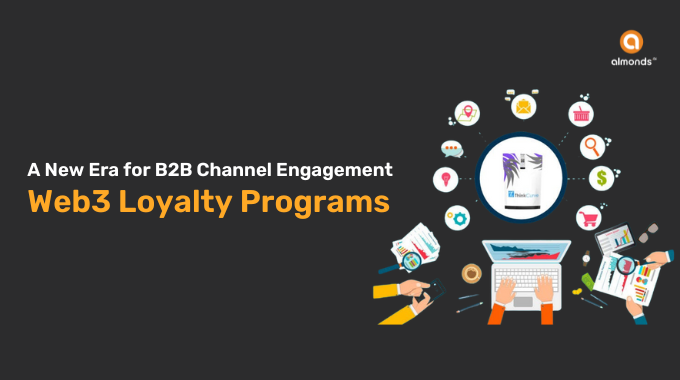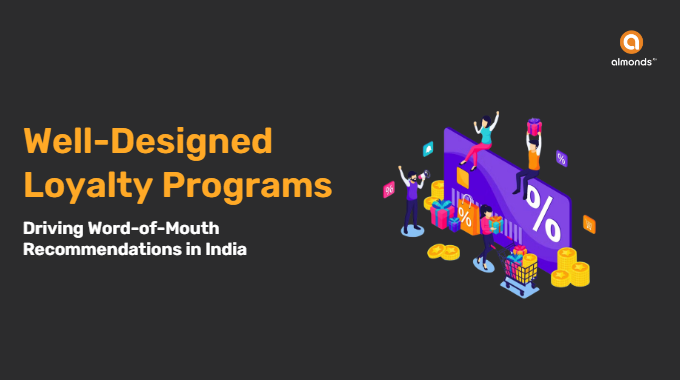In today’s competitive market, traditional loyalty programs are increasingly falling short in engaging and retaining customers. This is particularly evident in B2B sectors where personalized and experience-driven engagement is crucial. Recent advancements in Web3 technology offer a transformative solution, providing more secure, personalized, and engaging loyalty programs that can significantly enhance B2B customer relationships.
Shortcomings of Traditional Loyalty Programs
Current loyalty programs often focus too heavily on products and transactions, leading to several significant shortcomings:
1. Lack of Personalization: Traditional programs tend to offer generic rewards that do not cater to the unique preferences and behaviors of individual customers. This lack of personalization can result in low engagement and satisfaction.
2. Limited Engagement: Many loyalty programs operate like discount schemes, failing to provide meaningful experiences that resonate with modern, experience-centric consumers. As a result, these programs struggle to maintain customer interest and loyalty.
3. Poor Redemption Rates: Less than half of the earned reward points are typically redeemed, indicating a disconnect between what programs offer and what customers value.
4. Data Silos: Traditional loyalty programs often suffer from fragmented data systems, preventing brands from gaining a comprehensive understanding of their customers’ behaviors and preferences.
Experience-Driven Loyalty Programs
To address these issues, experience-driven loyalty programs have emerged as a superior alternative. These programs focus on creating unique and memorable experiences that go beyond mere transactions. Here are key elements of experience-driven loyalty programs:
1. Personalized Rewards: Offering rewards that are tailored to the individual preferences and behaviors of customers can significantly enhance engagement. This can include personalized offers, exclusive events, and unique experiences that align with customer interests.
2. Engagement Beyond Transactions: Modern loyalty programs reward customers not just for purchases but also for engaging in various activities. This can include participating in brand events, creating content, or engaging in social media campaigns. Such diverse engagement opportunities make the loyalty program more attractive and rewarding.
3. Flexibility and Accessibility: Customers should be able to easily earn, redeem, and transfer rewards. Providing options to buy rewards directly from brands or through secondary markets adds flexibility and increases the perceived value of the loyalty program.
Role of Web3 in Enhancing Loyalty Programs
Web3 technology plays a crucial role in transforming traditional loyalty programs into experience-driven models, particularly in B2B contexts. Here’s how:
1. Enhanced Security: Blockchain technology provides a decentralized and tamper-proof system for storing and managing loyalty points and rewards. This ensures that points and rewards are protected from unauthorized access and fraud, enhancing the security and trustworthiness of the program.
2. Transparency: Blockchain’s inherent transparency allows all transactions to be visible and verifiable, building trust among customers. This transparency ensures that customers can see how their points are earned and redeemed, fostering a more trusting relationship with the brand.
3. Interoperability: Web3 enables seamless interaction across multiple loyalty programs. This is particularly beneficial for token-gated events and collaborations with third-party services, making the loyalty program more versatile and appealing.
4. Improved Customer Insights: Web3 provides deeper insights into customer behaviors through on-chain data. Brands can analyze token holdings, NFT purchases, and other decentralized finance activities to better understand their high-value customers and tailor their marketing strategies accordingly.
Web3 for B2B Loyalty Programs
For B2B companies, Web3 loyalty programs offer a unique opportunity to engage channel partners and clients in more meaningful ways. By incorporating Web3 technology, B2B loyalty programs can:
1. Create Value-Driven Partnerships: Engage channel partners through personalized rewards and incentives that align with their business goals and preferences.
2. Enhance Engagement: Encourage partners to participate in activities beyond transactions, such as contributing to product development, providing feedback, or participating in exclusive events.
3. Secure and Transparent Transactions: Utilize blockchain to ensure that all transactions and rewards are secure and transparent, building trust and reliability in the program.
4. Leverage Data for Insights: Use blockchain data to gain insights into partner behaviors and preferences, enabling more targeted and effective engagement strategies.
Conclusion
The future of loyalty programs lies in leveraging Web3 technology to create secure, personalized, and experience-driven models. By addressing the shortcomings of traditional loyalty schemes and embracing the benefits of Web3, brands can significantly enhance their loyalty programs, driving greater engagement and satisfaction among customers and channel partners alike.
Discover how Almonds Ai can help your brand implement cutting-edge Web3 loyalty programs. Book a demo today to explore our comprehensive solutions and start transforming your customer loyalty strategies.







